|
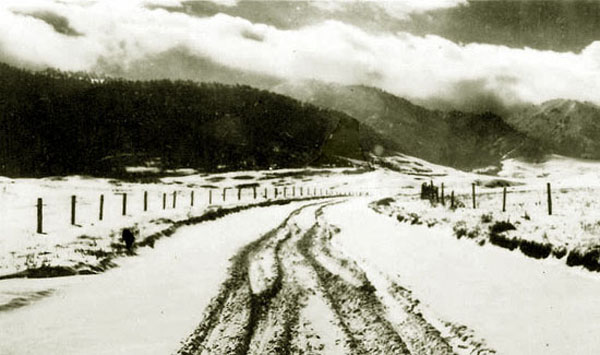
Casper Mountain, Winter, 1930's.
Fred Patee (1859-1937) first briefly appeared in Casper about May 1910 overseeing possible
development of the claims by the United States Mining & Fiberizing Company on Casper Mountain.
The company was apparently unrelated to the Minium companies. It was described by Mining Investor, July 22, 1912,
magazine in its report of the Minium indictments as a rival of Minium. The magazine noted the the Company had
attempted to have Minium arrested for moving claim stakes. Patee had previously operated a
mica mine near Fox Park, Wyoming. Subsequently, he prospected in Arizona and Utah. In Arizona, as previously noted,
he discovered the asbestos deposits in Ash Canyon and with a partner sucessfully operated asbestos mines until the property was sold
in 1916 to Johns Mansville. By 1915, Patee had acquired rights in some 15,0000 acres of potash fields in Southeast Utah. See bisbee
Daily Review, June 27, 1915, p. 9.. In 1916, he returned to Casper where he sold
home ice making machines. Earlier in 1912 Patee had applied for a patent on a new method of insulating
refrigerator cars using a composition of asbestos, ground cork and plaster of Paris for which he ultimately received a patent.
In Casper, Patee was active in promoting good roads. Rarely, if ever, was Patee's background and interest the good roads movement was mentioned.
Prior to 1899, Patee was of the movers and shakers in the League of American Wheelmen, a predecessor of the later 'Good Roads" movement. He
In Illinois he served as the State Consul in the Wheelmen and was a founder of the Preoria Bicycle Club. In Peoria, Patee was president of the
Patee Bicycle Company, but disappeared from public newsreports from 1900 to 1913 following
a nasty scandal. In 1899, Patee and a Prioria physician were arrested relating to the death of Patee's secretary. Patee took the secreary to Dr. Howard who allegedly performed
an illegal procedure on her. Allegedly the procedure caused the secretary to contract
puerperal septicenia from the effects of which she died. Dr. Howard was charged with homicide and Patee was charged as an
accessory before the fact as a result of his taking the secretary to the physcian.. Both were convicted and sentenced to Joliet. For the gory details see
Howard v. People of the State of Illinois, 185 Ill. 552, 57 NE 441 (1900).
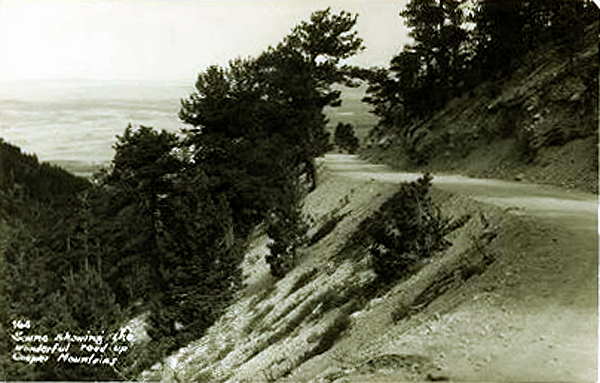
Casper Mountain automobile road, approx. 1927.
In 1926, the Tribune-Herald, Jan. 31, Section 1, Page 18, Noted the ddifficulty of automobile access to the top of Casper Mountain.
Improvements were made, but motor cars meeting another car had to pull into
"pockets" or, as our British cousins would say "lay-bys" to let the other car pass.
Patee's attention turned again to the asbestos on Casper Mountain. On April 10, 1929, Patee received a patent from the
United States for a mineral claim on Casper Mountain. Unlike Minium. Patee made no grandiose announcements of his patents. Instead he began making and
marketing locally cement block using asbestos aggregate as a binder for the cement rather than
sand. The advantage, apparently, of the asbestos aggregate is that it does not require expensive milling as did
the processing proposed earlier by Minium..
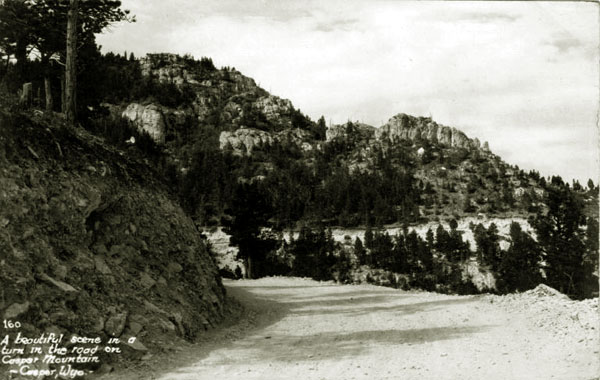
Casper Mountain automobile road, approx. 1928.
Additionally in 1927, Natrona County expended $20,273 on improvements to the road to Casper Mountain , making transportation of
the asbestos possible by motor truck. Earlier when the Casper-Salt Creek highway was built, Patee proposed that
the asbestos aggregate be used in the concrete paving. 'In the 1920's, Patee was regularly advertising his blocks in Casper newspapers. Additionally, in the early 1930's he was
managing the Emery Hotel in Thermopolis. The last record found of Patee's mining of
asbestos was in 1935.
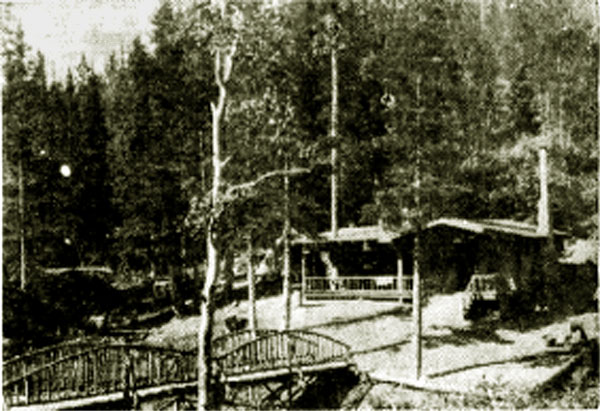
Casper Mountain Summer Home, approx. 1928.
With the improvement of the road, Casper Mountain became a place for summer homes and winter recreation.
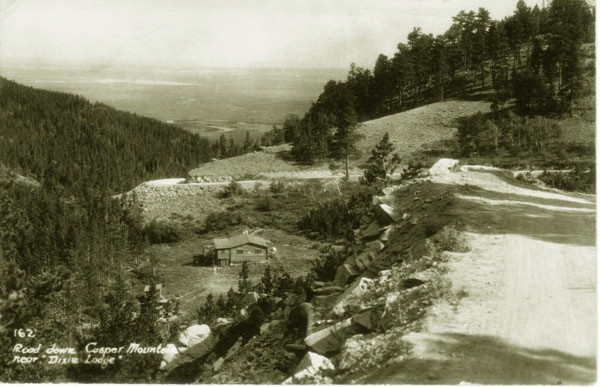
Casper Mountain, Dixie Lodge, approx. 1928.
The Dixie Lodge was at the foot of the Thunder Bolt Ski Run and about .2 miles from the Brookside Inn.
Later the mountain had three ski runs and well as Nordic skiing.
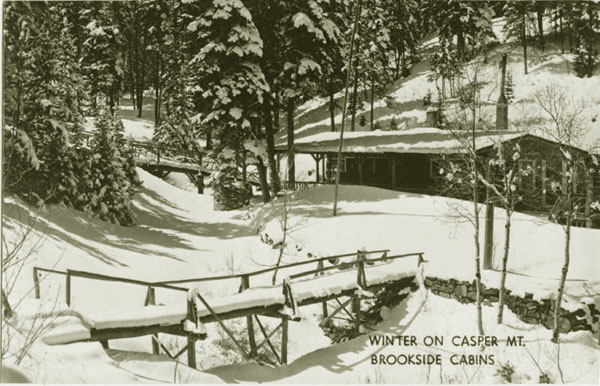
Casper Mountain Brookside Inn, approx. 1928.
With improvement to the road, a park was developed on top of the Hountain. From 1933 to 1935, the Civilian
Consrvation Corps made improvements to the park. About 1927, the Casper Lions Club developed a "health camp" on the mountain.
It later became a summer camp for, among others, the visually impaired. A protion of the original cabins are still a part of the camp.
CCC buildings are a part of the camp.
In the late 1930's the became the site of camping for artists.
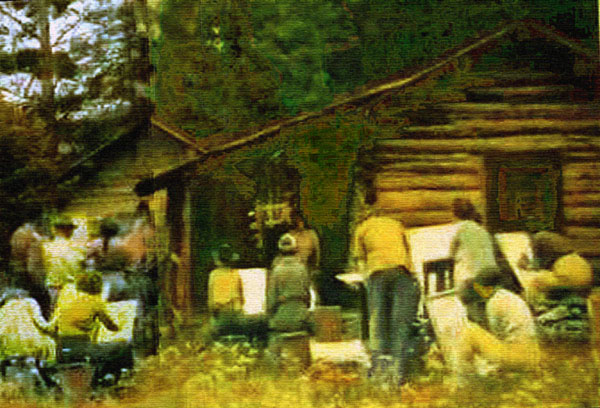
Art Class on Casper Mountain, approx. 1938.
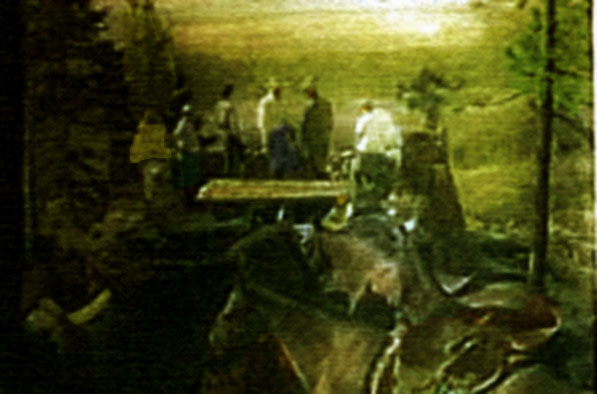
"Morning Has Broken," Casper Mountain, Lookout Point, approx. 1938.
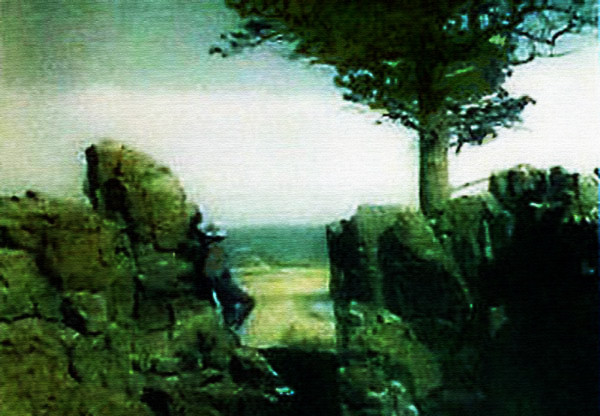
"Rock Gate", Casper Mountain, approx. 1938.
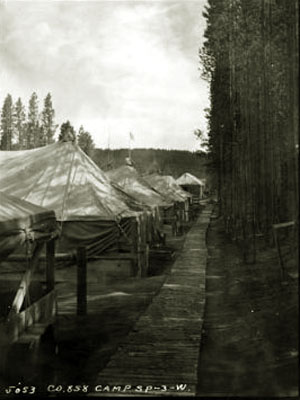 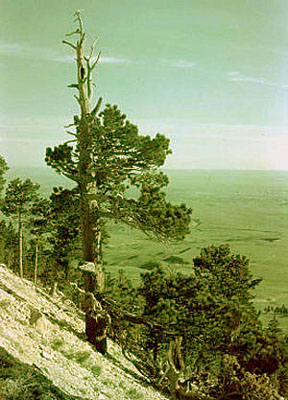
Left, CCC camp, Casper Mountain, approx 1933, Photo by
J.E.Stimson;
Right, View from Casper Mountain, photo by Thomas G. Carrigen.
The Lions Club camp has been renamed after Casper lawyer Allen H. Stewart who was active in the Lions and a District Governor in Lions
International. On March 22, 1966, Stewart and fellow Lion Arthur White had attended a Lions function in
Ten Sleep. They headed back to Casper over the U.S. Highway 16 crossing the 9,666 ft elevation Powder River Pass.
Although on March 22, blizzard and hazardous driving warnings were given by the United State Weather Bureau for
Wyoming, Montana and the Dakotas, it may be speculated that neither Steward or his passenger were aware of the warnings. Out on the
Great Plains the prior 15 days had been warmer than usual. Indeed, the weather that morning was described as
" mild, 'like a spring day,' although there was some light rain or mist in the air." See Schleusener v. Nebraska Tractor & Equipment Company,
187 Neb 648, 193 N.W. 2d 438 (1971), an action in which four occupants of a new Buick Wildcat died in the same blizzard which would overcome
the Stewart automobile. " In Schleusener, the Court observed, "There was no indication of a serious weather change."
The Court quoted the testimony of a farmer:
"Q. How do you recall this storm, when did it come up and what did you notice?
"A. Well, for one thing, it came up so quick that it never give nobody a
chance to realize what was really going to happen because we have never had
a storm like this for many years, as long as I can remember I have never
seen one that came up that quick."
In Powder River Pass, Stewart's car ran into the blizzard. That night
temperatures dipped as low as 10 degrees. In the car, Stewart was found dead.
White was found unconscious and suffering from frost bite. He was taken to the Worland Hospital. He survived but was disable for the remainder of his
life. Further to the north in Sheridan County John Parker, a cook for the Eaton Brothers' Ranch got caught in the blizzard.
He attempted to walk back to the ranch. He fell into an irrigation ditch. An Eaton Brothers cowboy heard
his cry for help, but it was unfortunately too late. In Nebraska, in addition to the occupants of the Buick,
two brothers, Ernie and Eddie Lowe died after their truck became stuck in the snow. A cowboy Gerald Aufedgarten also died in the blizzard.
Aufdengarten had grown up in Wyoming before he moved to Nebraska where he was a team roper champion and a member of the
Nebraska Sandhills Rodeo Association. He was inducted into the Association's Hall of Fame in 2013.
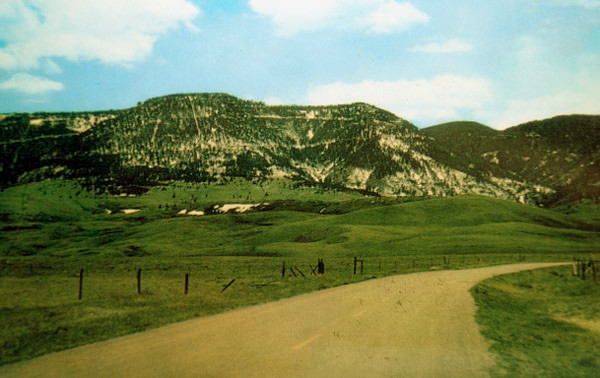
Casper Mountain Drive, 1950's..
Next Page; The Killing of Sheriff W. C. Ricker, the hanging of Charles F. Woodard.
Casper Photos continued on next page.
|